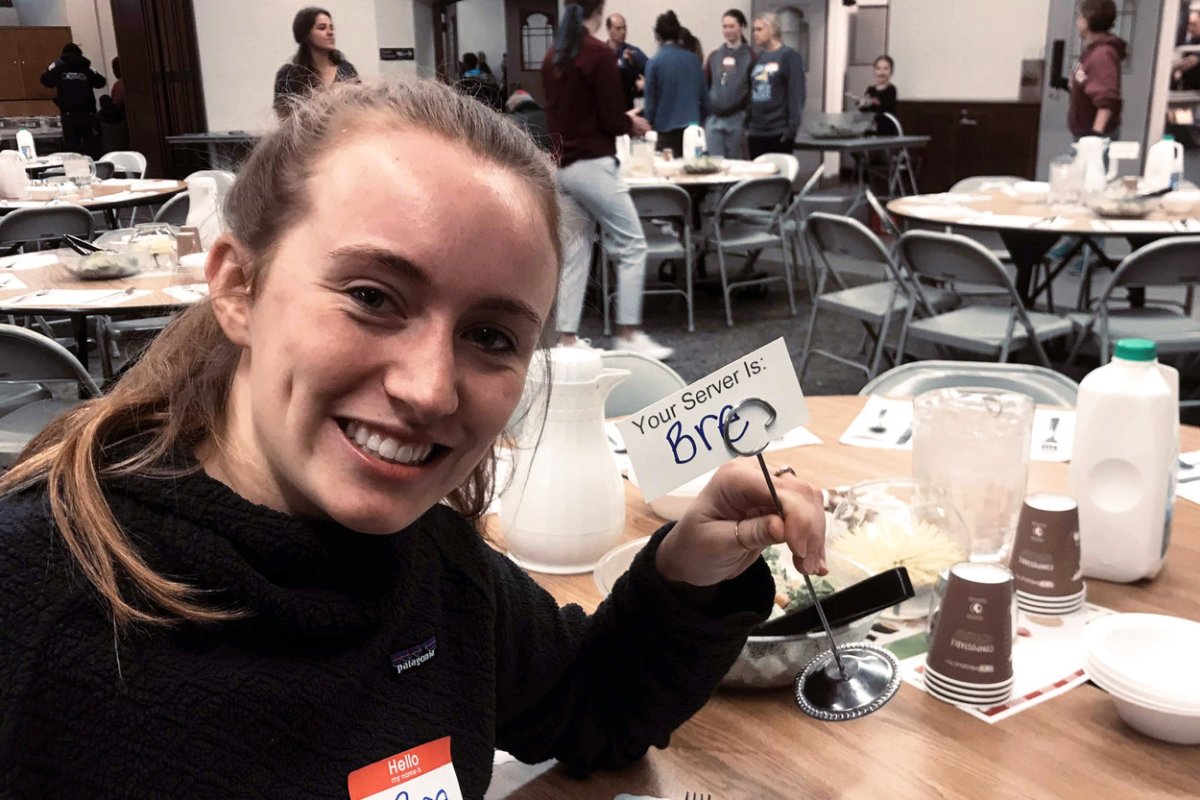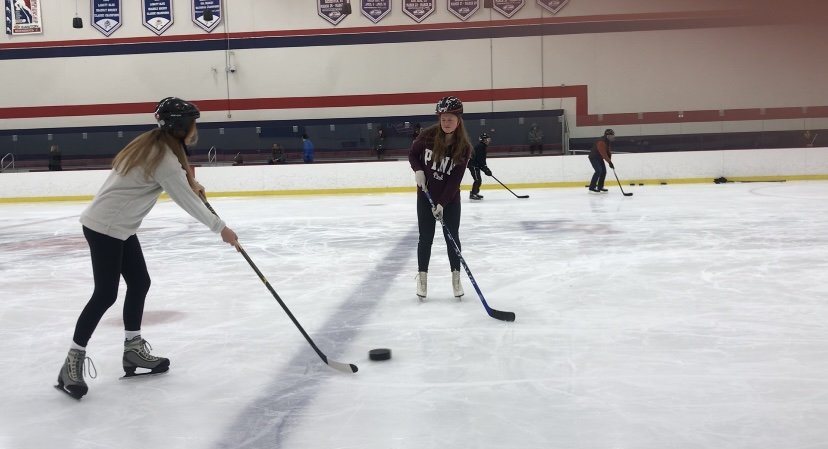CSE student goes beyond volunteering

Above: She joined the University of Minnesota Community Engagement Scholars Program to better integrate service learning into her life.
All photos courtesy of Breanne Retherford.
Breanne Retherford finds ‘lasting impact’ in community engagement program
May 6, 2021
From serving the homeless meals to helping people with visual impairments play hockey, Breanne Retherford does it all without any second thoughts. The biomedical engineering senior is one of three College of Science and Engineering students graduating this May as a University of Minnesota Community Engagement Scholar.
The honor comes with a medal of distinction and a special notation on their official transcript. Retherford—along with Carrie Kistler, a computer science major, and Jennifer Rosauer, an industrial and systems engineering major—earned the public service recognition by each completing at least 400 hours of volunteer service. Plus, six reflection papers on their experiences, eight credits from a list of classes that incorporate service learning into the coursework, and one senior capstone project.
The U of M Community Engagement Scholars Program (CESP) is open to all degree-seeking undergraduate students at the University who are eager to make a deeper commitment with their outreach activities.
“I began my CESP journey junior year because I wanted to learn about more opportunities to get involved in my community and how to perform meaningful service that can create a lasting impact,” Retherford said.
“However, I have learned much more during this program, such as the importance of working with instead of for community members and the power of one-to-one relational meetings,” she added.
For example, in one CESP-approved class she took, she got to work with the local nonprofit Center For Practice Transformation to help improve its website. What was different, she said, was the approach she and classmates took: Communicating with members of the organization and the customers themselves to find out what the website needed—instead of jumping in as outsiders, both new to the group and to the problem at hand, to offer solutions.
“The community engagement classwork in this program has been essential in helping me to articulate volunteering experiences and build a foundation for continued community work after graduation,” she explained.
Lasting connections that started with her parents
Volunteering comes easy to Retherford. It was a family activity growing up.
“My parents took my siblings and me around a lot to volunteer,” she said, “and that was very helpful in creating a foundation and love for volunteering. They helped me to get involved in Girl Scouts, Adventure Princesses, Feed My Starving Children, National Honor Society, and other organizations that value volunteering.”
Since joining the College of Science and Engineering, Retherford has been active in several student groups including the Society of Women Engineers, the Panhellenic Honors Society, and the University of Minnesota Running Club. She has also held leadership roles, such as director of alumnae relations for Delta Gamma Fraternity, blood drive and fundraising chairs for Alpha Phi Omega Service Fraternity, and president of the Lettuce Club—a.k.a. Head Lettuce. (Yes, a title she earned in 2019 for being the fastest person to finish eating a head of lettuce.)

“I was grateful to have the opportunity in CESP to work with a number of different organizations through my involvement in a variety of clubs and programs at the University of Minnesota,” she noted. “Some of my favorite activities were working with the recently developed Minnesota Wild’s Blind Hockey Team to help people of different ages who are visually impaired to play a sport that they love, and volunteering as a community meals server with Alpha Phi Omega Service Fraternity for those who cannot afford to have their own warm dinners.”
CESP has also taught Retherford to more closely match her academic and career interests to her volunteering.
In the Twin Cities, for instance, she worked with a UMN chapter of Engineering World Health (EWH) team and a seven-year-old boy to redesign his 3-D printed prosthetic hand. Internationally, she and other EWB members, collaborated with students in Uganda to develop low-cost medical device solutions for health centers in the east African nation.
“The Community Engagement Scholars Program has allowed me to realize this intersection between biomedical engineering and community work both locally and globally,” said Retherford, who also serves as a student tech support in the Earl E. Bakken Medical Devices Center on the Twin Cities campus. “It has also taught me that community engagement can be applied in many different environments of an undergraduate education.”

Despite the pandemic, Retherford’s zest for volunteering hasn’t slowed down. She did what she could at a few food shelters last summer. This spring, she spent time at a local COVID-19 vaccine clinic organized by Community Care Clinics of Minnesota and even co-launched—with U of M students Dani Alfonzo Mudoy, a mechanical engineering major, and Lillian Johnson, a family social science major—an effort to rope in more helpers.
“A couple friends and I started coordinating a volunteer program at the clinic a couple of weeks ago,” she said, “because there were all these steps that needed to be done so more people could get vaccinated, like checking people in at the front door, but there were not enough volunteers to get these things done more efficiently or quickly. So that’s where I’ve dedicated a lot of my time recently. It has been a blast though!”
To learn more about the Community Engagement Scholars Program, visit the Center for Community Engaged Learning website.
Story by Pauline Oo
If you’d like to support students at the University of Minnesota College of Science and Engineering, visit our CSE Giving website.
